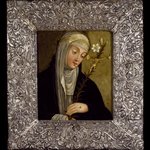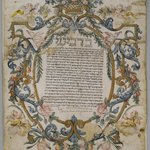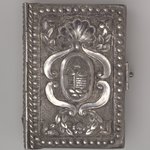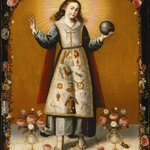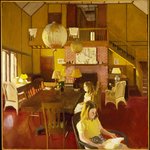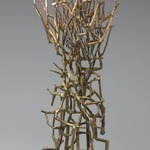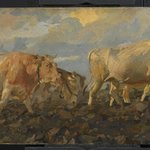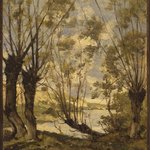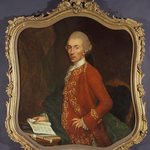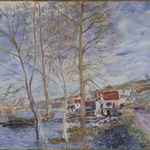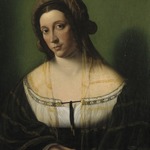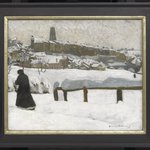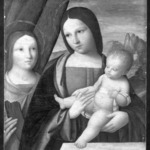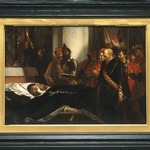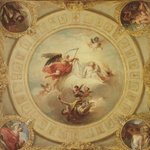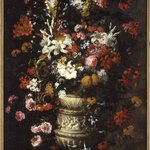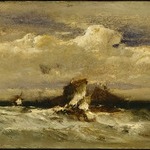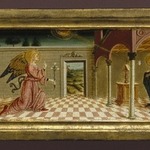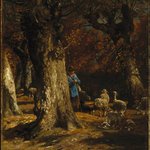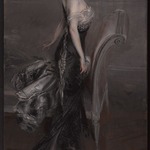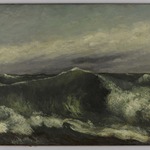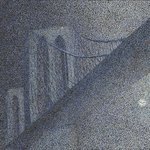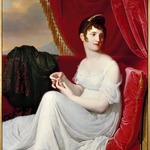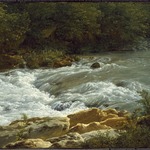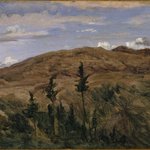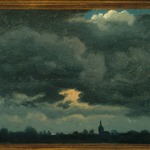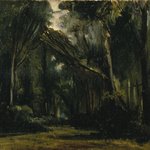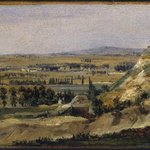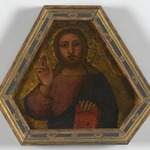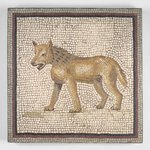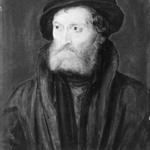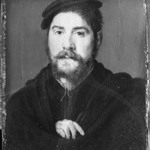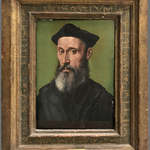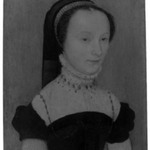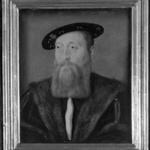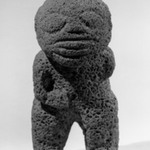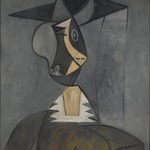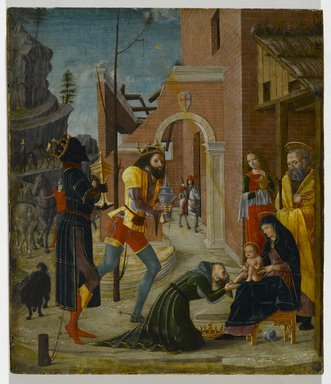
The Adoration of the Magi
Bernardino Butinone
European Art
By the late 1400s, Black African people were increasingly visible in Europe. Some arrived as church delegates or as part of diplomatic retinues; many more were brought as a result of the European slave trade in Africa, which intensified during this time. They began to appear in European art as well, particularly in images of the three Magi paying homage to the Christ Child.
Written sources described the Magi as bearing gifts from the known continents of the time—Africa, Asia, and Europe. By the end of the fifteenth century, one of the Magi (Caspar or Balthazar) more regularly began to be depicted with the skin color and generalized facial features of a Black African man, underscoring the European dream of Christian sovereignty around the world. Here, the Black Magus is last in line, his head aligned with the camels in the procession on the hill in the background, emphasizing what contemporaneous viewers would have perceived as their shared “exoticism.”
Written sources described the Magi as bearing gifts from the known continents of the time—Africa, Asia, and Europe. By the end of the fifteenth century, one of the Magi (Caspar or Balthazar) more regularly began to be depicted with the skin color and generalized facial features of a Black African man, underscoring the European dream of Christian sovereignty around the world. Here, the Black Magus is last in line, his head aligned with the camels in the procession on the hill in the background, emphasizing what contemporaneous viewers would have perceived as their shared “exoticism.”
MEDIUM
Tempera on panel
DATES
ca. 1485–1495
DIMENSIONS
9 3/4 x 8 1/2 in. (24.8 x 21.6 cm)
frame: 15 x 13 x 2 3/4 in. (38.1 × 33 x 7 cm) (show scale)



COLLECTIONS
European Art
ACCESSION NUMBER
78.151.6
CREDIT LINE
Bequest of Helen Babbott Sanders
EXHIBITIONS
MUSEUM LOCATION
This item is not on view
CAPTION
Bernardino Butinone (Italian, Milanese, ca. 1450–1510). The Adoration of the Magi, ca. 1485–1495. Tempera on panel, 9 3/4 x 8 1/2 in. (24.8 x 21.6 cm). Brooklyn Museum, Bequest of Helen Babbott Sanders, 78.151.6 (Photo: Brooklyn Museum, 78.151.6_PS2.jpg)
IMAGE
overall, 78.151.6_PS2.jpg. Brooklyn Museum photograph, 2008
"CUR" at the beginning of an image file name means that the image was created by a curatorial staff member. These study images may be digital point-and-shoot photographs, when we don\'t yet have high-quality studio photography, or they may be scans of older negatives, slides, or photographic prints, providing historical documentation of the object.
RIGHTS STATEMENT
No known copyright restrictions
This work may be in the public domain in the United States. Works created by United States and non-United States nationals published prior to 1923 are in the public domain, subject to the terms of any applicable treaty or agreement.
You may download and use Brooklyn Museum images of this work. Please include caption information from this page and credit the Brooklyn Museum. If you need a high resolution file, please fill out our online application form (charges apply).
The Museum does not warrant that the use of this work will not infringe on the rights of third parties, such as artists or artists' heirs holding the rights to the work. It is your responsibility to determine and satisfy copyright or other use restrictions before copying, transmitting, or making other use of protected items beyond that allowed by "fair use," as such term is understood under the United States Copyright Act.
The Brooklyn Museum makes no representations or warranties with respect to the application or terms of any international agreement governing copyright protection in the United States for works created by foreign nationals.
For further information about copyright, we recommend resources at the United States Library of Congress, Cornell University, Copyright and Cultural Institutions: Guidelines for U.S. Libraries, Archives, and Museums, and Copyright Watch.
For more information about the Museum's rights project, including how rights types are assigned, please see our blog posts on copyright.
If you have any information regarding this work and rights to it, please contact copyright@brooklynmuseum.org.
RECORD COMPLETENESS
Not every record you will find here is complete. More information is available for some works than for others, and some entries have been updated more recently. Records are frequently reviewed and revised, and we welcome any additional information you might have.


